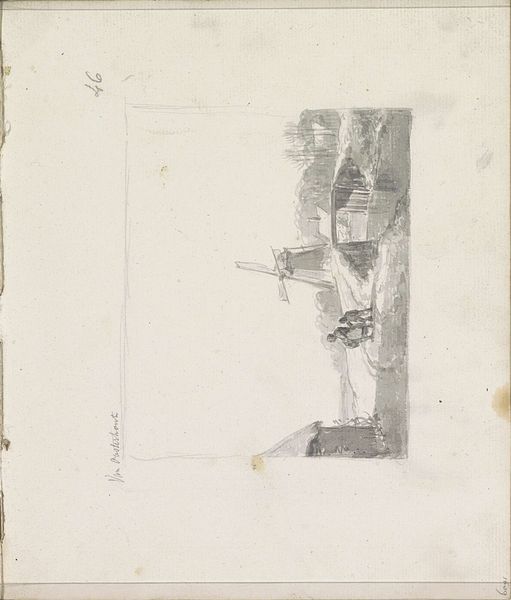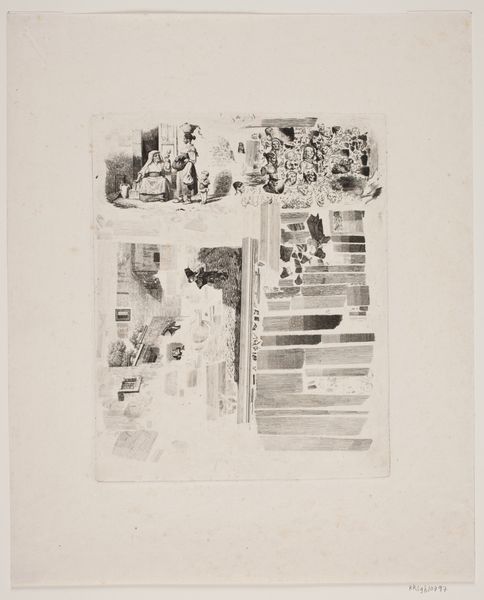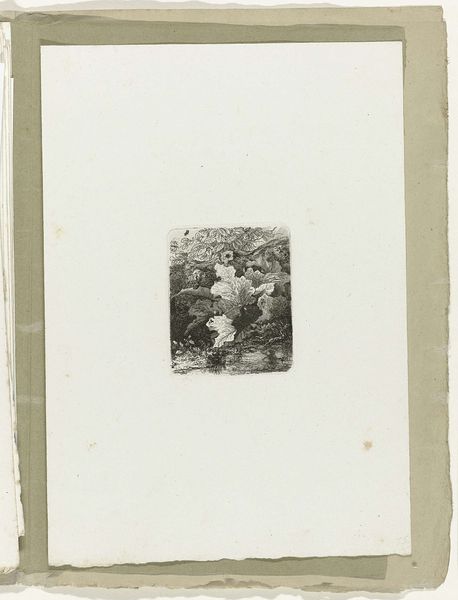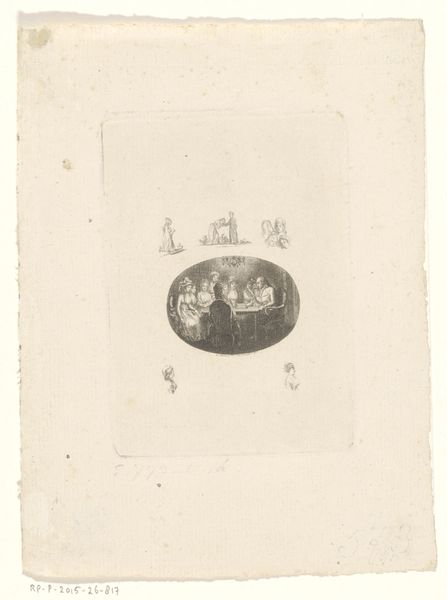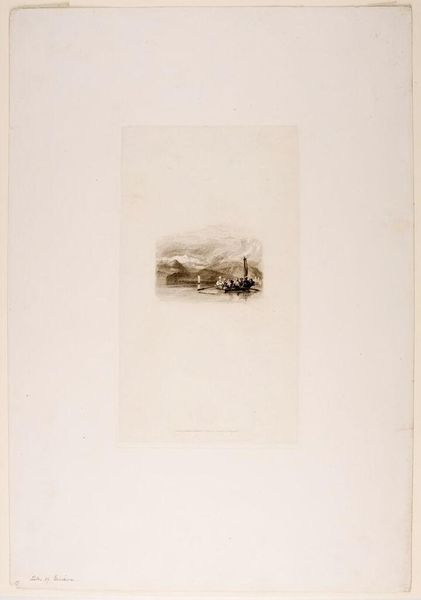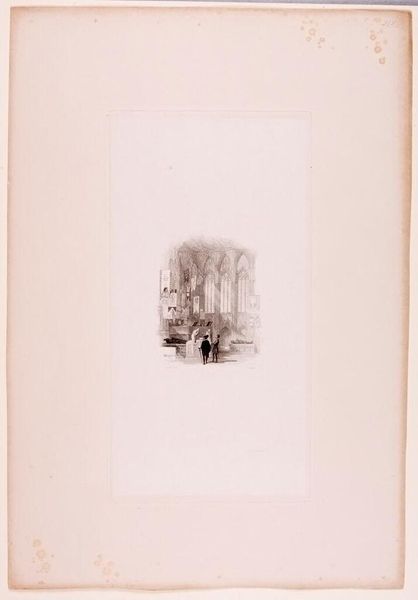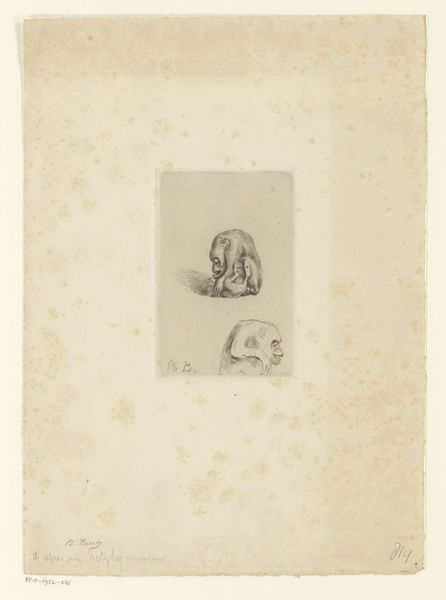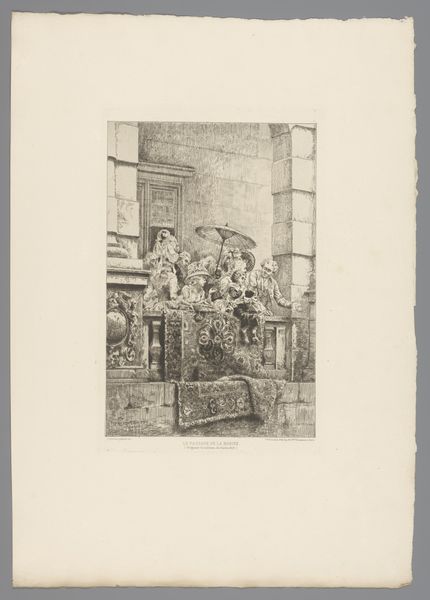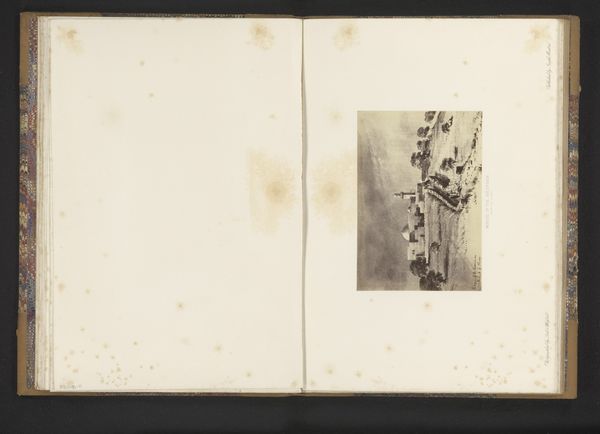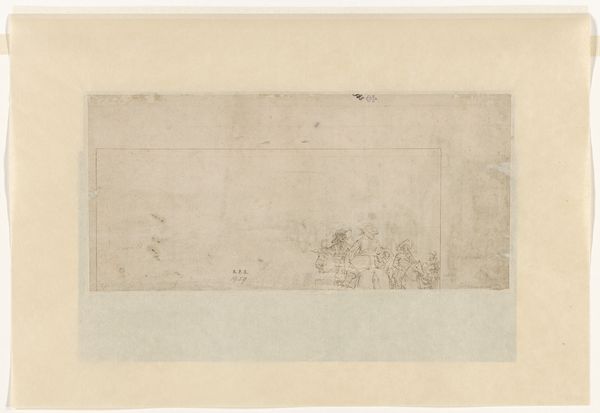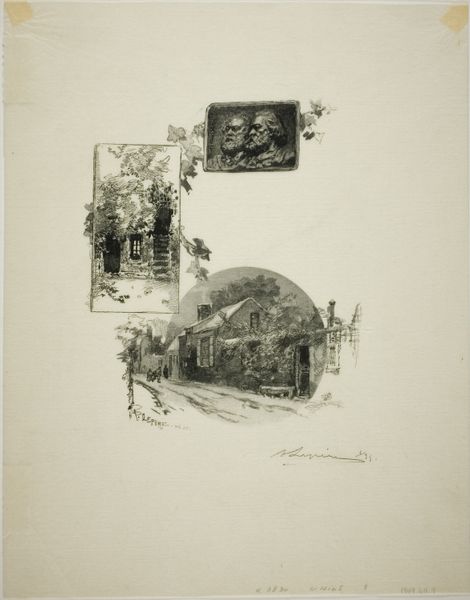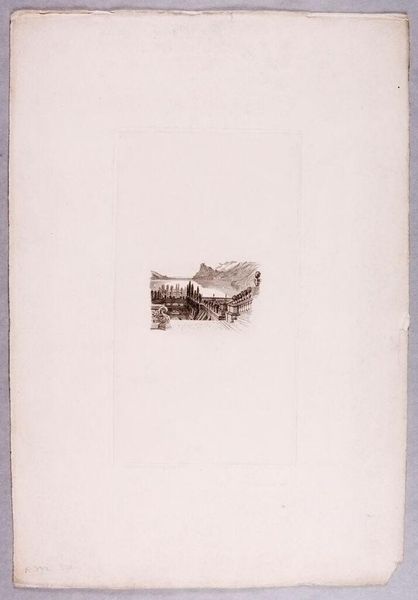
Prøveblad med italienerinde siddende ved siden af kvinde og dreng og blyantstudier 1829
0:00
0:00
drawing, mixed-media, print, etching, pencil, pen
#
portrait
#
drawing
#
mixed-media
#
narrative-art
# print
#
etching
#
group-portraits
#
pencil
#
pen
#
genre-painting
#
history-painting
#
academic-art
#
italian-renaissance
#
mixed medium
#
mixed media
Dimensions: 261 mm (height) x 213 mm (width) (bladmaal)
Curator: This intriguing work, created in 1829 by August Krafft, is titled "Prøveblad med italienerinde siddende ved siden af kvinde og dreng og blyantstudier"—or, "Proof Sheet with Italian Woman Sitting Next to Woman and Boy and Pencil Studies." It resides here at the SMK, the National Gallery of Denmark. It seems to combine mixed media techniques like etching, pencil and pen. Editor: The first impression is ghostly; fragmented scenes layered upon a stained surface. It’s hard to grasp as a whole. It seems more like a set of fragmented ideas. What am I looking at here? Curator: This is essentially a "proof sheet," a test print from a printmaker's studio, revealing the artist's process. We're witnessing the intersection of careful planning and the tangible mechanics of production. Notice how Krafft uses various drawing tools alongside the etched images, displaying a range of methods for image-making. Editor: Seeing all these heads clustered together in one section almost overwhelms the senses, whereas the image of a seated Italian woman seems like a vignette from a stage play. Can you elaborate on the potential context behind the juxtaposition? Are there clues embedded here? Curator: The "Italian" theme perhaps speaks to the Romantic period's fascination with Southern Europe and its perceived cultural richness. Considering the multiple sketches, we observe a method of mass production emerging. One could argue the finished print serves not as art in itself, but as a commodity sample, which could circulate for consumption. Editor: It almost feels as if we're encountering the birth of modern image culture. Different modes of representation coming together—drawing as a unique art form being merged with reproduction techniques. I also wonder, what kind of viewer was Krafft anticipating? Were they from the same class and ethnic background as those shown here, or would they belong to a completely different group of people? Curator: Absolutely. These images were definitely intended for distribution within a particular social stratum. But let’s look back at the materiality. How does the paper’s discolouration—those marks—impact our perception of the whole? Editor: It brings the social life of the artwork closer to the forefront, doesn't it? The paper itself has endured. It is part of the journey. Curator: I agree, understanding artistic creation in tandem with historical and economic contexts invites meaningful dialogues on how we interact with art today. Editor: And in dissecting it, we are reminded that art does not come from a vacuum but reflects an individual’s relationship with culture.
Comments
No comments
Be the first to comment and join the conversation on the ultimate creative platform.
